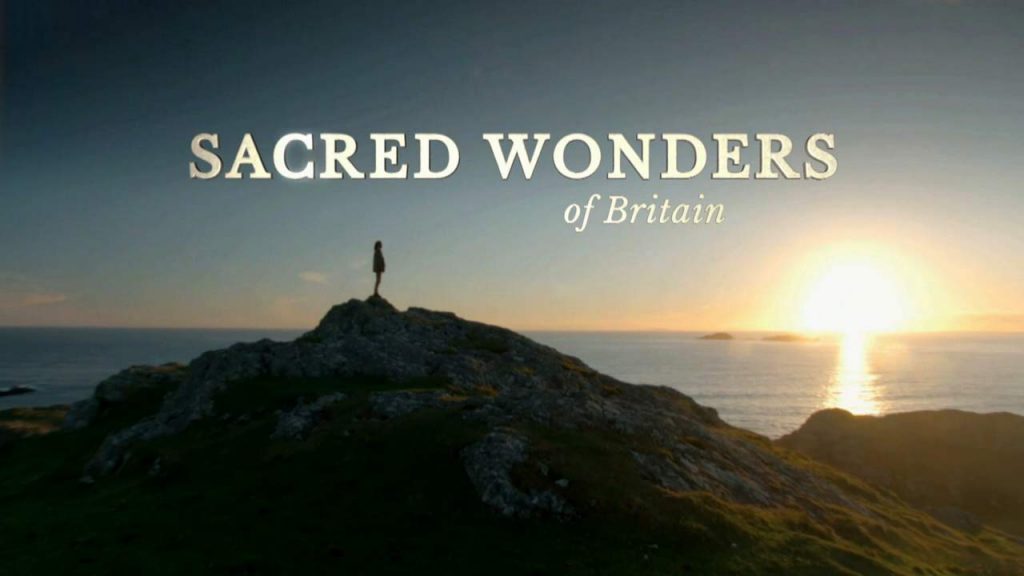Sacred Wonders of Britain episode 2: Neil is in search of Bronze and Iron Age sites that were sacred to ancient Britons, with water seen not just as a source of life, but also of reverence. At Flag Fen near Peterborough he discovers a vast ancient causeway built across the fens, with sacred objects placed among its timbers. At Maiden Castle’s hill fort in Dorset he unearths evidence of macabre human sacrifices to ward off evil spirits.
Neil travels to Anglesey, where swords, precious artefacts and even a slave chain were ritually deposited. It was home of the druids. Neil learns about their bizarre rituals and dark reputation and how the Romans viewed them as dangerous religious extremists.Moving on to Bath and its sacred spring, Neil discovers an early version of the habit of throwing coins into water. Once here the Romans recognised the old gods but also brought their own too, making Bath one of the most sacred sites in Roman Britain.
Finally Neil goes to Lullingstone’s Roman villa in Kent. Deep in the cellar he finds wall paintings of pagan water deities, while upstairs there are covert messages hidden in the mosaic floor, finally leading to the arrival of Christianity that swept away the old religions, changing Britain forever.
Sacred Wonders of Britain episode 2
Neil Oliver (born 21 February 1967) is a Scottish television presenter, archaeologist, historian and author. He is best known as the presenter of several documentary series on archaeology and history, including A History of Scotland, Vikings, and Coast. He is also an author of popular history books and historical fiction. Oliver first appeared on television in the 2002 BBC Two series Two Men in a Trench, in which he and archaeologist Tony Pollard visited historic British battlefields. He was also a co-author of the two books accompanying the series. In 2006, he presented The Face of Britain for Channel 4 and Scotland’s History: The Top Ten for the BBC. Early in his career he also appeared on The One Show and Time Team.
Oliver was a co-presenter of the first series of Coast in 2005, and replaced Nicholas Crane as the show’s main presenter for the second, third, fourth, and fifth series. He also presented Coast Australia (2013) and Coast New Zealand (2016). From 2006 to 2018 he presented a number of history documentaries for the BBC, including A History of Scotland (2008) and Sacred Wonders of Britain (2013). In 2012, he wrote and presented Vikings, a three-part series on the Vikings.
In April 2021, he was announced as a presenter for GB News. Oliver hosts a weekly current affairs and interview programme on the channel.
Flag Fen
Flag Fen, east of Peterborough, England, is a Bronze Age site developed about 3500 years ago, consisting of more than 60,000 timbers arranged in five very long rows, creating a wooden causeway (around 1 km long) across the wet fenland. Part-way across the structure a small island was formed. Items associated with it have led scholars to conclude that the island was of religious significance. Archaeological work began in 1982 at the site, which is located 800 m (0.5 miles) east of Fengate. Flag Fen is now part of the Greater Fens Museum Partnership. A visitor centre has been constructed on site and some areas have been reconstructed, including a typical Iron Age roundhouse dwelling.
A Neolithic trackway once ran across what archaeologists have termed the “Flag Fen Basin”, from a dry-land area known as Fengate to a natural clay island called Northey. The basin is an embayment of low-lying land on the western margins of the Fens. The level of inundation by 1300 BC led the occupants to construct a timber causeway along the trackway route. The causeway and centre platform were formed by driving ‘thousands of posts with long pencil-like tips’ through the ‘accumulating peaty muds’ and into the firmer ground below. The resulting structure covered three and a half acres.




